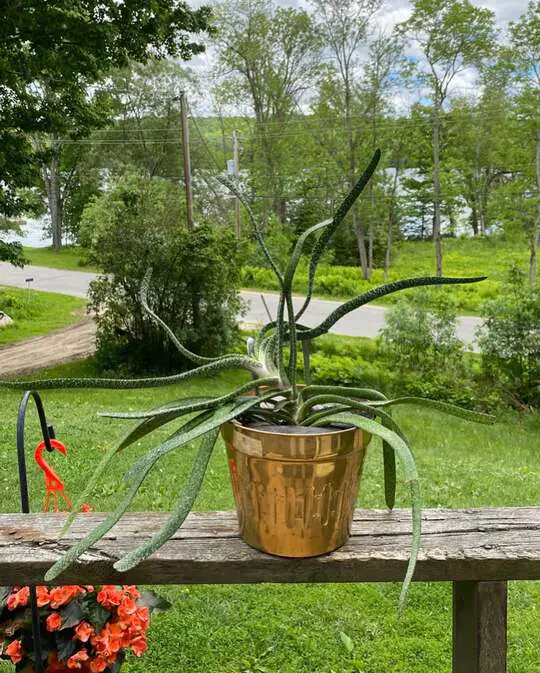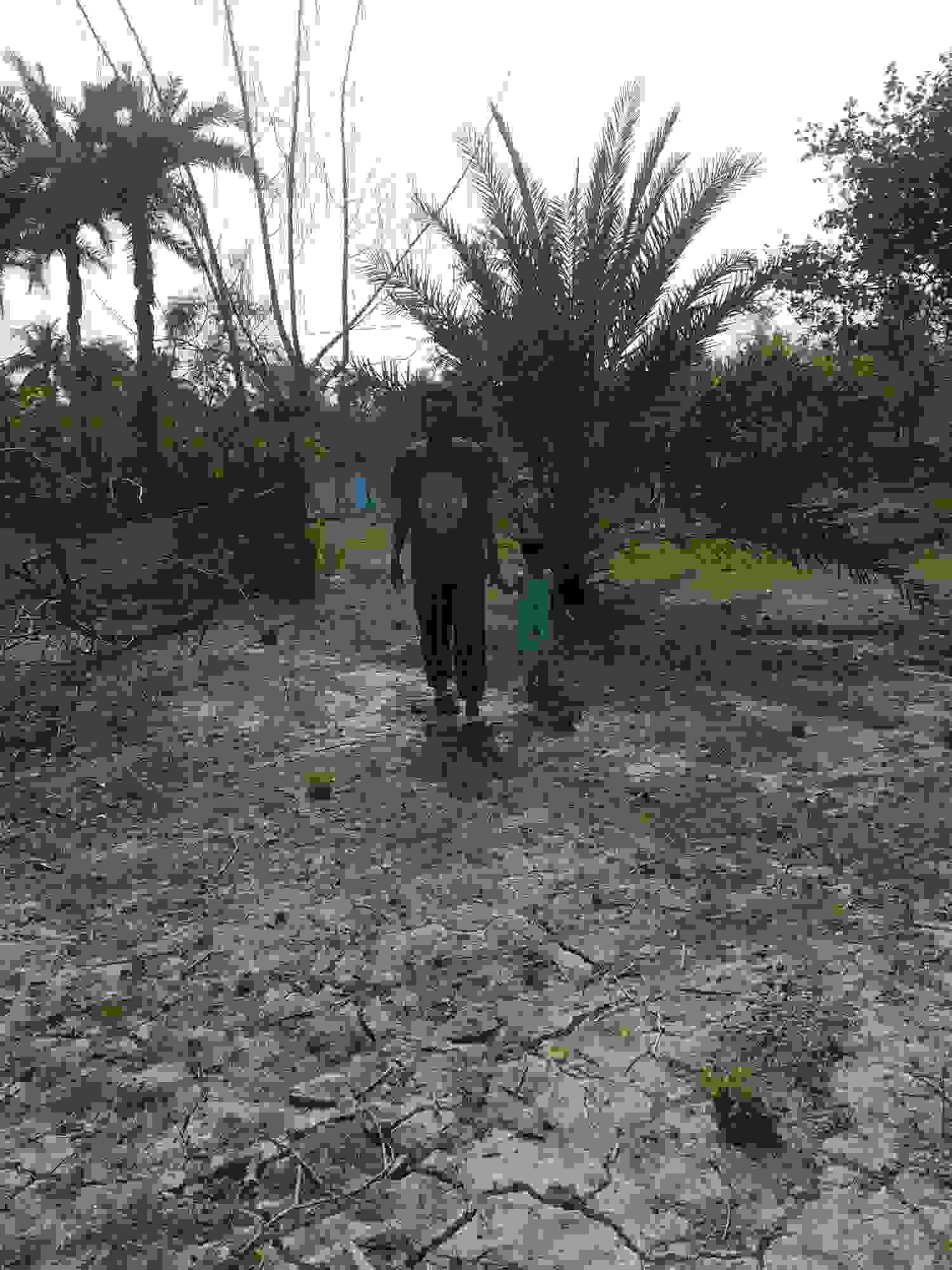Aloe vera is a hardy succulent loved for its soothing gel and low maintenance, but even this resilient plant can suffer from sunburn. Saving a sunburnt aloe vera requires immediate care and attention to prevent further damage. In the first 50 words, understanding the symptoms and adjusting its environment are key to helping your aloe recover fully.
Sunburnt aloe leaves often turn brown or reddish and may become dry or crispy. By providing the right shade, proper watering, and gentle care, you can restore your aloe vera’s health and bring back its vibrant green appearance.

Recognizing the Signs of Sunburn on Aloe Vera
Visual Indicators of Sunburn
Sunburn on aloe vera typically shows up as discoloration on the leaves. The affected leaves may develop brown, red, or white patches where the skin appears dry or crispy. These patches are often dry to the touch and may cause the leaf tissue to feel weak or brittle. Sometimes, the edges of the leaves curl or shrivel as well. Noticing these early symptoms helps prevent irreversible damage.
Changes in Leaf Texture and Health
Sunburn can cause aloe leaves to lose their natural plumpness and moisture content. Instead of firm, fleshy leaves, sunburnt leaves become thin and papery. This dehydration reduces the plant’s ability to store water, affecting its overall vigor. Prolonged exposure may lead to leaf drop or permanent scarring.
Other Symptoms to Watch For
- Fading of the aloe’s natural green color to pale yellow or white
- Development of soft, mushy spots underneath sunburned areas (indicating potential secondary infection)
- Slowed growth or dormancy as the plant directs energy toward recovery
Early recognition of these signs ensures you can take steps to save your sunburnt aloe vera effectively.
Why Aloe Vera Gets Sunburnt
Aloe Vera’s Natural Habitat and Sun Exposure
Aloe vera naturally grows in arid, semi-shaded environments where it receives filtered sunlight rather than intense, direct sun all day. When exposed to harsh, unfiltered sunlight—especially during peak hours—its thick, fleshy leaves can suffer damage. Unlike desert cacti that thrive under relentless sun, aloe leaves are more vulnerable to UV radiation, which can cause sunburn.
Sudden Changes in Light Conditions
One common reason aloe vera gets sunburnt is a sudden change in its light environment. For example, moving a plant from indoors or a shaded patio directly into full sun can shock the leaves. This rapid transition does not give the plant time to adapt its protective mechanisms, resulting in sun damage. Gradual acclimation is necessary for outdoor aloe plants to handle stronger sunlight.
Environmental Factors That Increase Risk
Certain environmental conditions raise the risk of sunburn in aloe vera:
- High temperatures combined with intense sunlight cause leaf tissue to overheat and dry out.
- Reflection from surfaces such as concrete, glass, or light-colored walls can intensify light exposure.
- Drought stress or underwatering weakens the plant’s natural defenses, making it more susceptible to sun damage.
Understanding these causes helps prevent sunburn and keeps your aloe healthy.
How to Create the Ideal Recovery Environment
Provide Adequate Shade
To help a sunburnt aloe vera heal, the first step is to reduce its exposure to direct sunlight. Move the plant to a location with filtered light or partial shade. Ideally, place it where it receives morning sun and is protected from harsh afternoon rays, which are strongest and most damaging. Using a shade cloth or placing the aloe near taller plants can also diffuse intense light effectively.
Maintain Proper Watering Practices
Sunburnt aloe requires careful watering to avoid further stress. Water the plant moderately but deeply, allowing the soil to dry out between waterings. Overwatering can lead to root rot, especially when the plant is weakened. Aloe vera thrives in well-draining soil, so ensure pots have adequate drainage holes to prevent standing water.
Control Temperature and Humidity
Aloe vera recovers best in warm but not excessively hot conditions. Keep the temperature between 60°F and 75°F (15°C – 24°C) to avoid further stress. Avoid placing the plant in drafts or near heat sources like radiators. Moderate humidity levels help maintain leaf moisture without encouraging fungal growth. If indoors, use a humidifier or mist lightly if the air is very dry.
Creating this ideal environment supports aloe’s natural healing process and promotes robust regrowth after sunburn.
Proper Watering Techniques for Sunburnt Aloe Vera
Adjusting Water Frequency
Sunburnt aloe vera plants require careful watering to avoid additional stress. Overwatering can worsen the condition by promoting root rot, especially since sunburn damages the plant’s ability to absorb water efficiently. Water your aloe vera only when the top 1 to 2 inches of soil feel dry to the touch. Typically, this means watering every 2 to 3 weeks, but it may vary depending on your climate and potting conditions.
Best Watering Methods
- Deep, infrequent watering: When you water, soak the soil thoroughly until water drains from the pot’s bottom. This encourages roots to grow deeper and strengthens the plant’s drought resilience.
- Avoid leaf wetness: Do not pour water directly on the leaves or crown, as excess moisture on sunburnt tissues can cause fungal infections or rot. Focus watering at the soil level.
- Use room temperature water: Cold water can shock damaged roots and leaves, so use water that is close to ambient temperature for best results.
Soil and Drainage Considerations
Proper drainage is crucial to prevent waterlogging in sunburnt aloe vera. Use a well-draining cactus or succulent potting mix rich in sand or perlite. If growing in a container, ensure drainage holes are unobstructed. Consider elevating pots on pot feet or trays to improve airflow and drainage.
Proper watering combined with adequate sunlight and care can speed up the healing process of your aloe vera.
Pruning Aloe Vera to Remove Damaged Areas
Why Pruning is Essential After Sunburn
Pruning sunburnt aloe vera helps the plant focus energy on healthy growth instead of struggling to repair severely damaged leaves. Removing burnt or dead tissue reduces the risk of infection and improves air circulation around the plant. It also enhances the aloe’s appearance by eliminating unsightly brown or crispy patches.
How to Identify Leaves for Pruning
Look for leaves that are:
- Completely brown or crispy with no signs of recovery
- Soft, mushy, or showing signs of rot under sunburn spots
- Severely curled or shriveled beyond repair
Healthy leaves should be left intact to support the plant’s photosynthesis and healing process.
Pruning Steps for Aloe Vera
- Use clean, sharp scissors or pruning shears to avoid spreading disease.
- Cut leaves close to the base, but avoid damaging the main stem or surrounding healthy leaves.
- Dispose of pruned leaves properly; do not compost them as they may harbor pathogens.
- After pruning, avoid watering the plant for a day or two to let cut areas callous over, preventing infection.
Pruning helps your aloe vera recover faster by removing damaged areas and promoting new, healthy growth.
Gradual Sunlight Acclimatization Tips
Why Gradual Acclimatization Matters
Sudden exposure to intense sunlight is a common cause of aloe vera sunburn. Gradual acclimatization allows the plant to build its natural defenses against UV rays by slowly increasing its sun exposure over days or weeks. This process helps the aloe develop thicker, more resilient leaves and reduces the risk of leaf scorch or dehydration.
Step-by-Step Acclimatization Process
- Start Indoors or in Shade: Begin by placing your aloe vera in a shaded area or indoors near a bright window but away from direct sunlight.
- Incremental Exposure: Over 1–2 weeks, gradually increase the amount of direct sunlight by moving the plant a few hours a day into partial sun, then longer periods as it adapts.
- Monitor Leaf Condition: Watch for any signs of stress such as leaf discoloration or curling. If symptoms appear, reduce sunlight exposure and slow the acclimatization pace.
Additional Tips for Successful Acclimatization
- Avoid exposing aloe vera to the harsh midday sun during initial stages; morning or late afternoon sun is gentler and safer.
- Use a sheer curtain or shade cloth to diffuse sunlight if full exposure isn’t yet safe.
- Maintain consistent watering and care during this period to support recovery and growth.
By carefully adjusting your aloe vera’s sunlight exposure, you ensure it thrives without the risk of sunburn.
Preventing Future Sunburns
Choose the Right Location
Placing your aloe vera in an ideal spot is key to preventing future sunburn. Choose a location that offers bright, indirect sunlight or morning sun with afternoon shade. Avoid areas with intense, direct afternoon sunlight, especially during summer months when UV rays are strongest. Indoors, a south- or east-facing window with filtered light works best for aloe plants.
Use Protective Measures
To shield aloe vera from harsh sun exposure:
- Shade cloths: These can reduce sunlight intensity by 30-50%, protecting leaves from scorching.
- Plant grouping: Position aloe near taller plants or structures that cast partial shade during peak sunlight hours.
- Move pots seasonally: If growing in containers, shift your aloe to more sheltered spots during extremely sunny periods.
Maintain Plant Health for Resilience
Healthy aloe vera plants tolerate sun better. Ensure:
- Proper watering to avoid drought stress.
- Well-draining soil to prevent root issues.
- Regular feeding with a diluted succulent fertilizer during the growing season to strengthen leaves.
- Prompt pruning of damaged leaves to reduce stress.
Implementing these preventative steps helps safeguard your aloe vera from future sunburn and keeps it thriving year-round.
Understanding Aloe Vera’s Sunlight Requirements
Ideal Light Conditions for Aloe Vera
Aloe vera thrives best in bright, indirect sunlight. While it is a sun-loving succulent, direct exposure to harsh midday sun can cause leaf burn. Typically, aloe prefers about 6 to 8 hours of light daily, but much of this should be gentle morning or late afternoon sun rather than intense midday rays. This balance allows the plant to photosynthesize effectively without risking damage.
Effects of Insufficient vs. Excessive Light
- Too little light: Aloe vera may become leggy, with elongated, weak leaves as it stretches toward the light source. The color may also fade, turning pale green.
- Too much direct sun: Leaves develop sunburn spots, turning brown, reddish, or white, and the plant may suffer from dehydration and stress.
Tips to Meet Sunlight Needs
- Place aloe near a south- or east-facing window indoors for optimal filtered sunlight.
- Outdoors, provide morning sun and afternoon shade or use a sheer curtain/shade cloth to soften intense light.
- Monitor your plant’s leaf color and texture regularly to adjust light exposure accordingly.
Understanding and managing aloe vera’s sunlight needs ensures strong, healthy growth without the risk of sunburn.
Conclusion
Saving a sunburnt aloe vera is entirely possible with the right care and attention. By recognizing sunburn signs early, adjusting its light exposure gradually, and providing proper watering and pruning, you can help your plant recover fully. Creating a balanced environment with adequate shade and optimal conditions supports healing and prevents future damage. Remember, prevention through mindful placement and care is the best way to keep your aloe healthy and vibrant for years to come.

I’m Shofi, a passionate gardener and blogger. I have 10+ years of experience in gardening and hold certifications in horticulture and garden design. I share my knowledge and skills through my garden blog to inspire and educate others on the joys of gardening. I try to provide valuable information and create a community for gardeners of all levels to connect and learn. My ultimate goal is to inspire others to start their own gardens and connect with nature.
